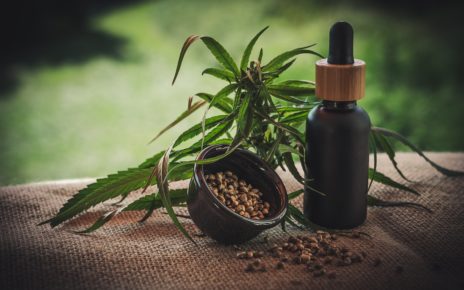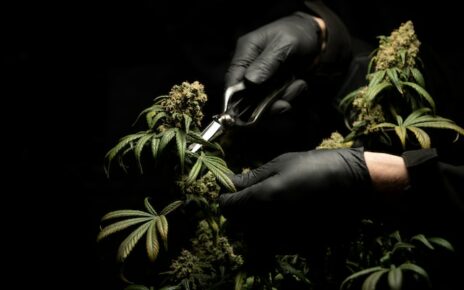When Gov. Pritzker signed Illinois’s “Adult Use” recreational cannabis licensing law, many of us already in the industry were impressed by how quickly the state planned on enacting its program and accepting licenses. It was rolled out so quickly, as a matter of fact, that I found a typo in the statute (Section 15-45(f)), which reflects how quickly the bill was advanced through the legislature.
The law sets an aggressive timeline for the licensing of adult use marijuana dispensaries and growers, and one fundamental oversight in the program was immediately apparent to me and others in the industry. While flaw will likely be music to the ears of black-market dealers, it spells trouble for licensed Illinois cannabis companies, especially dispensaries.
What’s the issue? Illinois is not licensing additional cultivation centers anytime soon, though the statute allows that to happen at a later date. Instead, Illinois will only license existing medical marijuana cultivation centers for recreational sales, as well as a limited number of dispensaries and craft growers. Illinois has approximately 20 such cultivation centers, which serve about 70,000 medical marijuana patients. Basic arithmetic suggests this will not be nearly enough to satisfy the demand for recreational marijuana in Illinois.
Further exacerbating this problem, Illinois will license dispensaries before craft growers, will only issue 40 craft growers licenses in the first wave, and initially limits them to 5,000 square feet of canopy space. It almost seems as if the statute was designed to create a cannabis shortage—or to line the pockets of existing medical marijuana cultivation centers. Reports of large political donations from existing medical marijuana companies seem to indicate it’s the latter.
Cannabis Shortages are Coming
As a cannabis business attorney who worked through Michigan’s rollout of its medical marijuana licensing, I have a pretty good idea of how these things go. I saw right away that the way Illinois planned to implement its program would result in an extreme cannabis shortage that will likely persist for several years.
When Michigan started licensing cannabis businesses in late 2017 / early 2018, it made the mistake of licensing the dispensaries first and the growers second. This led to a substantial shortfall among cannabis licensees that made it hard for dispensaries to obtain enough inventory to open their doors. This was further exacerbated by the fact that the inventory they were able to purchase was at such a high price that it was hard to make money, with some choosing to delay opening until there was enough licensed product available. Unlike Illinois, however, Michigan had “caregivers” to fall back on, which are small, mostly unregulated growers who are temporarily allowed to sell into the licensed market due to the shortage of licensed product.
Illinois’s licensed cannabis market, on the other hand, has no such safety net. Because the state is licensing dispensaries first, it is basically guaranteeing a cannabis shortage. Cultivation centers, unlike dispensaries, take a long time to build. Even retrofitted facilities can take up to a year to become operational, and ground-up facilities can take up to two years to construct. Dispensaries, on the other hand, can have buildouts as short as 90 days. And unlike Michigan dispensaries, which could wait to open until the cultivators caught up, dispensaries in Illinois will be required to open their doors or lose their license. That then begs the question: How do they stay open for business if they have no product to sell?
There’s a good chance that the first wave of Illinois dispensaries will have very little cannabis to line their shelves. The only available product will come from cultivators of medical marijuana. They will not be enough to supply the entire recreational market, especially since Illinois “Adult Use” law requires that they must make sure that medical users have enough cannabis before selling to recreational dispensaries and consumers. The few licensed of craft growers won’t be able to fill the void, and likely won’t even start production until well after the dispensaries are operational. This could result in incredibly high retail pricing—think $75 an eighth or higher—as well as dispensaries closing early each day when they run out of product.
Positioning Your Cannabis Business in the Illinois Market
Looking to other states, wholesale prices almost always spike when a licensed cannabis program is rolled out, followed by a gradual fall as more and more cultivation facilities become operational. In some cases this can lead to a crash (I’m looking at you, Oregon). Assuming this shortage comes to pass, dispensaries may not make much money within the first year or two of their operation, if they make any at all. While this will change as more supply comes online, dispensary owners will still need to secure sufficient operating capital to weather the storm.
On the other hand, this is a cultivator’s dream come true. In the first couple years of the program, Illinois grow licenses will likely prove especially lucrative. Cannabis shortages drive up the cost of wholesale product and allow growers to unload their product with practically no effort. With dispensaries knocking down their doors, Illinois cannabis cultivators will be able to sell their product at huge margins.
This also incentivizes Illinois growers to retrofit buildings or choose greenhouses, which are less expensive and quicker to build than ground-up indoor facilities. The window to take advantage of this cannabis shortage won’t last forever, and having an extra year of high-margin sales can allow your cannabis company to build a nice cash stockpile which can be deployed in the second wave of applications.
Craft Growers License
Illinois is not currently licensing new cultivation centers, but craft grower licenses seem like a great place for new entrants in Illinois’s recreational cannabis market. While they’re commonly perceived as small, low-volume facilities, this might not be the case, or at least an over-exaggeration.
Illinois initially limits craft growers to 5,000 square feet of canopy space for flowering plants, meaning it does not count plants “in veg.” Illinois’s law also contains a little-discussed provision that opens the door to larger operations:
The Department of Agriculture may authorize an increase or decrease of flowering stage cultivation space in increments of 3,000 square feet by rule based on market need, craft grower capacity, and the licensee’s history of compliance or noncompliance, with a maximum space of 14,000 square feet for cultivating plants in the flowering stage, which must be cultivated in all stages of growth in an enclosed and secure area.
Illinois only has approximately 20 medical marijuana cultivation facilities that would be eligible to supply the recreational market. To account for the increased “market need” brought about by recreational cannabis, the state is likely to grant craft growers’ additional space after it becomes apparent to state regulators that cannabis products are in short supply.
To best position your craft grower facility for success, you will want to have room to grow beyond the current limit of 5,000 square feet. Whether that means finding land to expand your facility or greenhouse or simply having additional building or greenhouse space, craft growers should be ready to scale up their facility to accommodate the anticipated demand for their cannabis.
Finally, it should be noted that Illinois’s statute states that the 5,000 square foot requirement only applies to flowering plants, which means it does not apply to plants “in veg.” This is an important distinction. “Veg space” often takes up a significant percentage of a grow facility and is not counted in the canopy size restriction, so it’s best to keep that in mind when you are scouting for grow space.
What’s a Dispensary to Do?
One suggestion is to follow the lead of dispensaries in other states. Many that have faced this problem sell a range of products to supplement weakened cannabis sales. Michigan dispensaries have used CBD sales to generate additional revenue in the face of state-wide licensed cannabis shortages, though this practice can apply to all ancillary sales, such as rolling papers, blunt wraps, etc.
Another suggestion would to be limit the quantity of sales–in other words, don’t give discounts for volume. Selling at low volume usually brings higher profits as it’s typical for per-unit cannabis prices to drop when bought in bulk—for example, a store may sell 3.5 grams for $50 ($14.29/gram) but sell 7 grams for $90 ($12.86/gram). While these price breaks drive volume, dispensaries facing product shortages should worry less about volume and more about margin, which is higher with smaller sales.
Finally, dispensaries should have effective 280E tax strategies to take advantage of all possible write-offs, which will be important if there is limited product to sell. Keeping your costs under control is an effective way to compensate for scant supply.


